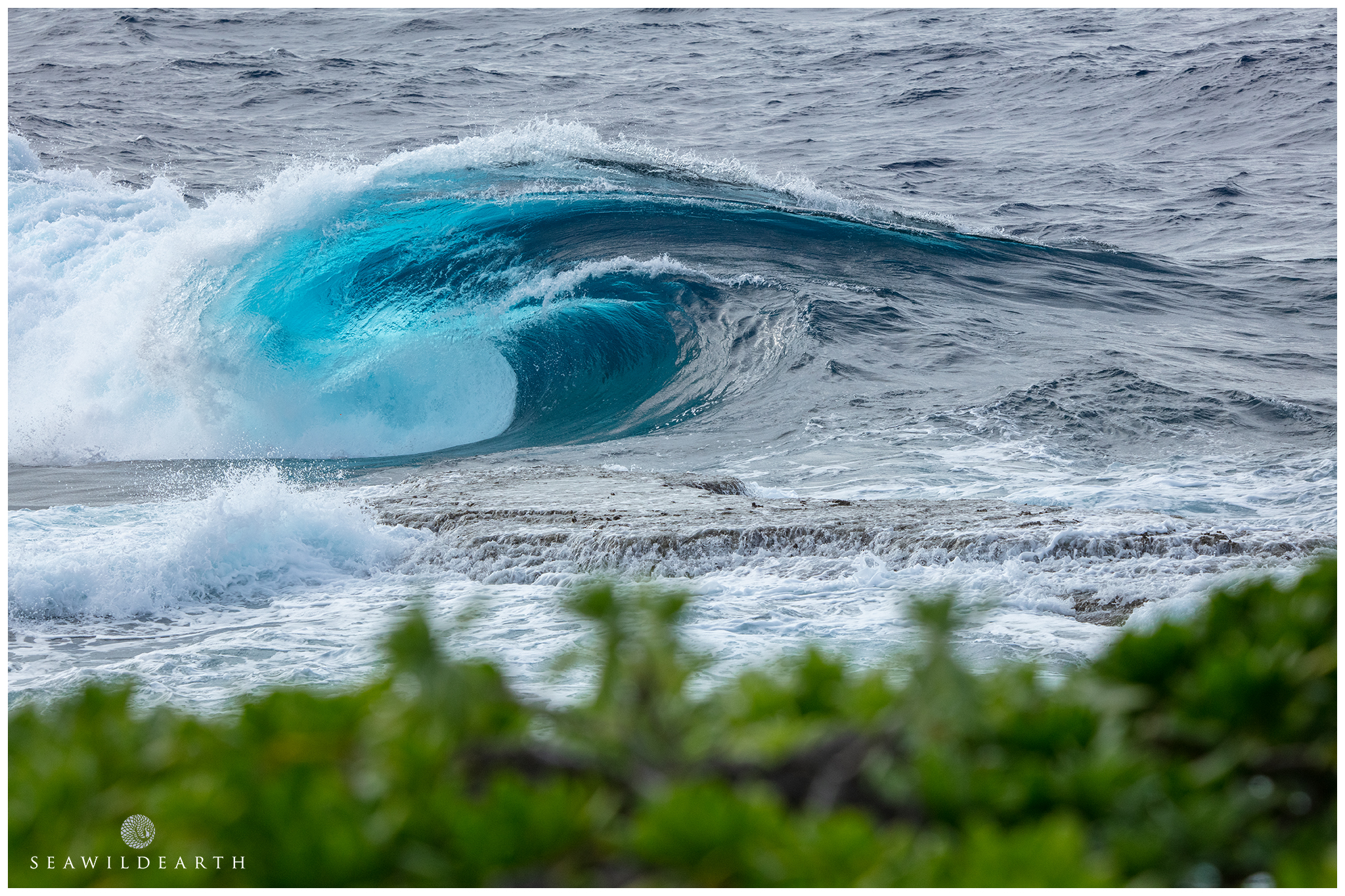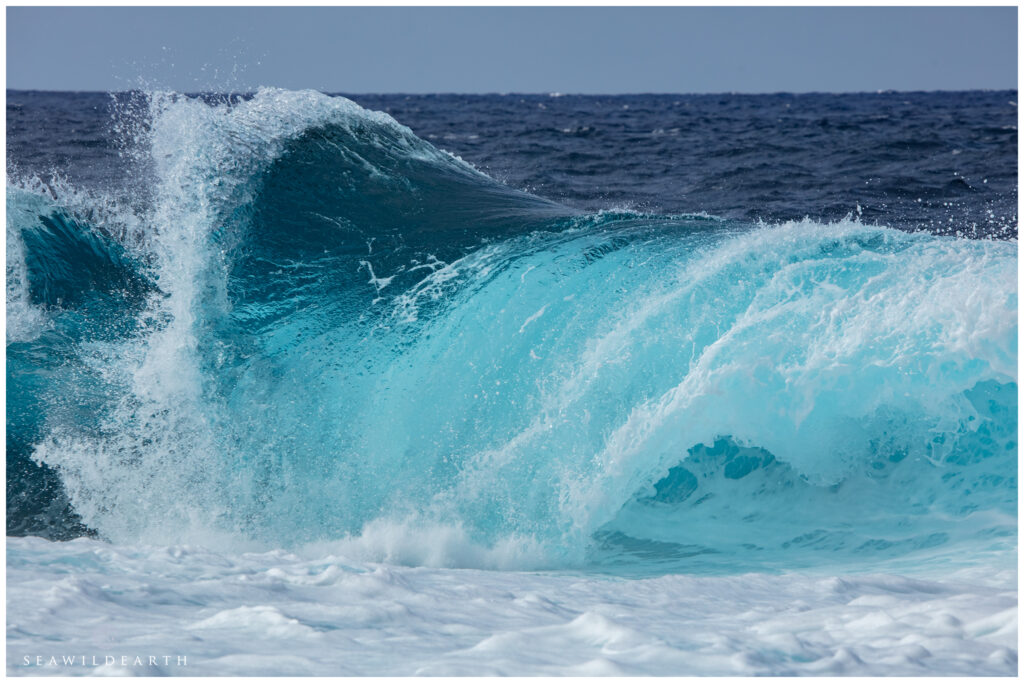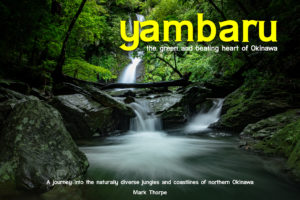Wave, and Surfing, Photography in Okinawa
Typhoon Season can be a real pain in the butt when you're looking to shoot anything but rough seas and big waves.
Wave Photography can be an awesome way to spend an hour or two when the weather isn't playing fair for other photoshoots. That said, and it often does happen, it can become an all-consuming genre of imaging. Just the idea of spending a few hours next to the Ocean, for most folks, is something well worth waiting, and planning, for. Now mix that with some imposing waves slamming into a volcanic coastline, and you get the picture. This was how I recently spent around four hours of an afternoon here in Okinawa. Wave Photography soon sucks the shooter in. I found myself on a particularly rough ocean day moving around a small inlet area trying to dodge the spray as each wave tip dissipated into thin air as the almost typhoon conditions whipped around it.

If anything my main tip would be to have a toweling cloth available to wrap your camera / lens in to avoid the inevitable exposure to salt water.
I found myself shooting predominantly in Aperture Priority mode. This way I could decide on the depth of field. The conditions on the day were not changing that much so I opted for f11 to keep everything crisp. I then went with an ISO of 640 which, given the ambient lighting, would generally allow for a shutter speed of some 1/1250th of a second. This was sufficient enough a shutter speed to freeze all elements of the wave I was focusing on.

What's the name for a little slab? A Slabette?
As with all waves they come in sets. A noticeable lull would then be followed by a "Holy Moly" session when the size of the waves would again have me questioning my choice of shooting location. That said for this particular bout of Wave Photography I had opted to go with a Tamron 150-600mm f5.6-6.3 zoom so I could still distance myself from the action, to an extent. I still wanted to shoot as 'wide' as that lens allowed.
As always whenever I shoot the Ocean I spent a good twenty minutes simply watching the area before I started taking shots. This way I could see the extent of where the water would drain or flood when the master sets came in. This way I could shoot with confidence while still making things look as extreme as possible. I also knew the tide was at the time receding, so that was also a bonus. It's always wise to see what Mother Nature is doing before going wild with a camera. I've always learned not to turn my back on the Ocean for good reason.
The session turned out to be just what the doctor ordered. I found myself some five hours later with full memory cards, batteries at the point of almost exhaustion mixed with a sense of exhilaration after having been so relatively close to some impressive and thumping Ocean waves. Wave Photography will figure again in my shooting agenda, and hopefully not too far off in the distance either.
"We ourselves feel that what we are doing is just a drop in the ocean. But the ocean would be less because of that missing drop".
Mother Teresa
About the Author
Internationally recognized as a provider of quality mixed media Mark Thorpe is always on the search for captivating content.

Photographer / Cameraman
Mark Thorpe
Emmy Award Winning wildlife cameraman and Internationally published landscape photographer Mark Thorpe has been an adventurer since he could walk! Spending 17yrs as an Underwater Cameraman at the start of his imaging career the highlight of which was being contracted to work with National Geographic. In that role as a field producer and cameraman he's been privy to a mixed bag of hair raising adventures. For some reason he was always selected for projects relating to large toothed marine predators such as Great White and Tiger Sharks, Sperm Whales and Fur Seals. Additionally he has also been active within Southern Africa on terrestrial projects dealing with a wide array of iconic wildlife.
Currently based in Okinawa, Japan he's always on the lookout for his next big adventure. He shares his exploits online with a totally organic social audience in excess of 200,000. Sponsored by a number of photographic industry manufacturers he is constantly scouring the islands for captivating landscape and ocean scape compositions. In videography, he continues to create short photographic tutorial videos as well as creating content about the diversity of wildlife within Okinawa and the Ryukyu Islands of Southern Japan.
 Whenever that rarest of commodities is available, spare time, Mark continues to photograph the flora and fauna of Okinawa that will eventually be used to compile a Coffee Table Book project. 'Yambaru - The Green Beating Heart of Okinawa' is planned to showcase the diversity of wildlife species and landscapes that make up the incredible location known as the Yambaru, the rolling green jungles of Northern Okinawa. Mark has also devised a way for folks to become involved with that project via a support page on the Patreon social platform. For a small monthly donation, used to offset the travel and time to create the book, those willing to are in effect embarking on a 'lay away' project to secure a copy of the book which will also be signed by Mark as a sign of gratitude for the support. More information about this option can be found on the Patreon Profile for the project.
Whenever that rarest of commodities is available, spare time, Mark continues to photograph the flora and fauna of Okinawa that will eventually be used to compile a Coffee Table Book project. 'Yambaru - The Green Beating Heart of Okinawa' is planned to showcase the diversity of wildlife species and landscapes that make up the incredible location known as the Yambaru, the rolling green jungles of Northern Okinawa. Mark has also devised a way for folks to become involved with that project via a support page on the Patreon social platform. For a small monthly donation, used to offset the travel and time to create the book, those willing to are in effect embarking on a 'lay away' project to secure a copy of the book which will also be signed by Mark as a sign of gratitude for the support. More information about this option can be found on the Patreon Profile for the project.
